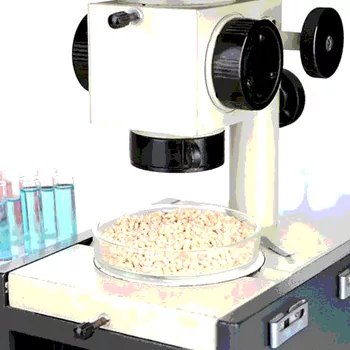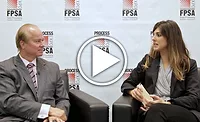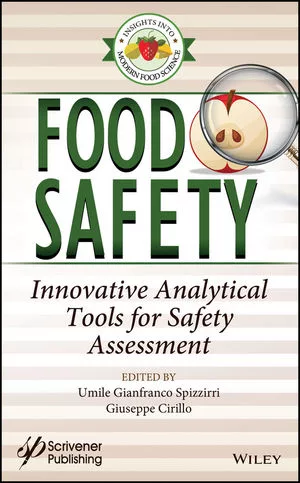What I Learned by Taking the FSPCA Preventive Controls for Human Food Course

Having recently completed the Food Safety Preventive Controls Alliance (FSPCA) Preventive Controls for Human Food (PCHF) course, I wanted to try to demystify the experience for those who are contemplating (or maybe procrastinating) taking it. What follows are 10 important points I took from the course that make the case for attending the training.
1. Taking the FSPCA course is more efficient than reading and applying the regulations on your own, even if you already are familiar with risk-based approaches such as Hazard Analysis and Critical Control Points (HACCP)
The PCHF final rule itself is daunting, and the regulations themselves require impeccable concentration (and knowledge of context) to understand and eventually apply them.
But is it really worth your organization’s money for you to attend the 2.5-day training course?
The training course was developed by a public-private partnership that included a large team of industry and academic experts along with U.S. Food and Drug Administration (FDA) officials (including those who wrote the regulations and who are now crafting the “tantalizingly close” PCHF guidance documents, some drafts of which are now available).
Taking the FSPCA PCHF course involves more than having the regulations spoon-fed to you. In fact, you probably won’t even really look at the regulations until the very end of the course. The benefits of the course mainly derive from being forced (in a kindly way) to work through many group exercises. You will get to spend a lot of time working on a particular food item (broccoli, carrot and pecan salad, anyone?). You’ll do a Hazard Analysis. You will discuss preventive controls and decide how to monitor them. You’ll debate the best verification and validation procedures and the kinds of supporting documentation you’ll need to keep. Your working group will feel like family, arguments and all. Even as an introvert, I found the exercises actually fun.
There is no test at the end of the course, but attendance and participation are required (hence, no online version of the course, although a blended, partially online version of the course is undergoing development). Class sizes are small, so you cannot sit in the back and quietly play Candy Crush on your smartphone or multitask continuously on the fires back at the plant. And if you sleep in late and miss the morning session, don’t expect to receive a certificate at the end of the course (see #3 for why you need the certificate).
There is certainly a benefit to having the material presented in a focused, well-caffeinated environment by a good instructor. Not just anyone can become a lead instructor. Before someone is allowed to even take the 2-day lead instructor training course (which also requires prior completion of the regular course itself in most cases), a selection committee will review the individual’s employment and education background and references.
The course manual (available in the public domain in a well-edited version 1.2 at the FSPCA website, www.ifsh.iit.edu/fspca) includes a large number of sample forms that can be used in the real world. While reading the material on your own might be helpful, gaining experience slogging through the exercises as part of a team and grappling with the sample forms (in an environment where you can ask unlimited questions of knowledgeable instructors) is invaluable.
2. Correct: “PREVENTIVE” controls; incorrect: “PREVENTATIVE” controls
One of my course instructors threatened to extract a buck from anyone who said “preventative controls” during the course. Luckily for some of my classmates, he was only kidding.
And no one is calling it “HARPC” anymore, even though Hazard Analysis is a critical part of the new rule.
3. The FSPCA PCHF course is the PCHF course
The PCHF course developed by FSPCA is the standardized curriculum that is recognized by and was developed in collaboration with FDA.
Taking the course and receiving a certificate of completion doesn’t get you continuing education units, but it will allow you to legally serve as a preventive controls-qualified individual (PCQI).
The PCQI is not to be confused with the “qualified individual” (another mystery the course unveils). As a PCQI, you are eligible to perform numerous preventive controls-related activities, including taking responsibility for your company’s (or another company’s) food safety plan. Taking the course is not required to perform these duties. You can also become a PCQI through “job experience.” This somewhat nebulous term is not going to be further defined by FDA, so it might be easier to just take the course (although again, it is not required).
Starting with the first official course taught by members of the FSPCA editorial committee in late 2015, the course has already been delivered (as of August 2016) more than 1,000 times to more than 15,000 individuals in locations all over the world (including many courses in Canada, Mexico, Chile and China). Because foreign manufacturers who sell food products in the U.S. must also comply with the PCHF rule, courses are being taught in many languages, and the course material itself will soon be available in Spanish and in Chinese, with a Japanese version expected to be available in 2017.
With over 66,000 U.S. food businesses that need to register with FDA and potentially comply with the PCHF final rule, training won’t be slowing down anytime soon. Given the short time requirements for some of the PCQI’s activities under the PCHF rule, it may be useful for companies to have multiple individuals undergo the training and become PCQIs to accommodate vacation schedules and job turnover. Even very small businesses that may be exempt from the rule will probably benefit from having an employee complete the training.
The cost of the course is up to the instructor and varies widely, from $250 to $2,000, averaging around $800. A regularly updated list of all FSPCA courses is available on the FSPCA website.[1] There’s one going on somewhere almost every day.
A separate course on preventive controls for animal foods is also now available. Courses on regulations for two other Food Safety Modernization Act (FSMA) foundational rules (Foreign Supplier Verification Program and Intentional Adulteration) are in development.
4. The Preventive Controls regulations include more than just process preventive controls and require consideration of a broad set of hazards
Some of us think of HACCP and its CCPs when we think about preventive controls. Preventive controls for human foods require consideration of food allergens, sanitation and supply chain issues, many of which do not have CCPs or limits. A formal recall plan, which is also a preventive control per the regulation, is also required if hazards are identified that require a preventive control. Radiological hazards and economically motivated hazards are among those that will need to be assessed as part of the food safety plan. They are similar to HACCP, certainly, but more encompassing.
Admirably, the course does not assume everyone is already HACCP trained. Significant background on the updated Current Good Manufacturing Practices and other prerequisite programs is included, as well as step-by-step instructions for performing Hazard Analyses.
5. Taking the course sooner rather than later is a good idea
Large companies were expected to be in compliance with the Preventive Controls regulations starting in September 2016, with later compliance dates for smaller companies (see FDA’s website for details[2]). The final rule indicates an average company will require 110 hours to put together a food safety plan, so it won’t be a trivial exercise.
6. There is more than one way to meet the PCHF requirements, and there is room for discussion and justification of your plan
In response to comments FDA received during PCHF rule development, the PCHF requirements are intentionally flexible. The course exercises clearly demonstrate that there are many different ways to accomplish the same end goals. My instructors never talked about “right answers” to the exercises. They were quick to point out that we would probably find things with which we disagreed (which we did), even in the sample food safety plan components provided after each exercise.
Questions are going to come up in real life too. An FSPCA technical assistance network[3] composed of Extension specialists, academics and international partners has been formed to answer scientific and technical questions from industry. A related network from FDA[4] has also been created to answer regulation and policy questions related to FSMA. The answers provided by the networks come from a team of professionals, not just an individual, highlighting that answers to questions regarding preventive controls requirements are not always black-and-white.
The initial chapters of the FDA guidance on preventive controls were released on August 24, 2016.[5] It’s obvious that FDA is encouraging questions on implementation and is preparing for them.
7. A team approach to putting together a food safety plan is the way to go
The course exercises clearly illuminate the advantage of having a cross-functional team of individuals working together to prepare an organization’s food safety plan. Not everyone working on the plan needs to take the course or be a PCQI. A collection of minds with different skill sets (production, product development, maintenance and/or sanitation, etc.) will generate a better food safety plan.
8. Management will need to be involved
The food safety plan needs to be signed by the owner, operator or agent in charge of a facility when it is first written and whenever changes are made. As an owner or operator or agent in charge, would you sign something you didn’t really understand or stand behind? Or, to rephrase that: Given recent criminal charges that food industry management has faced (in some cases because executives didn’t know what was going on in their plants), wouldn’t you as a food facility owner, operator or agent want to be involved in development of your company’s preventive controls?
9. Record-keeping will be significant
The course provides many examples of ways to document and maintain preventive controls-related records. You don’t have to reinvent the wheel yourself; use of the course’s suggested forms and organizational schemes may facilitate inspections, as your records will probably seem very familiar to investigators (see #10 below).
10. Yes, FDA investigators really are taking this course
Somewhat unusually, most of my course classmates were FDA investigators. It’s almost inspiring to realize that the regulators also need to learn how to implement preventive controls and are doing so by taking the exact same
FSPCA course and participating in the same exercises as (and with) the public. FDA investigators are therefore experiencing firsthand how flexibility in the regulations can lead to more than one way to accomplish the overall goals, which should translate into a better overall experience for everyone when they visit your facility.
In conclusion, I found the FSPCA PCHF course to be thoughtfully designed, very informative and almost…yes…fun. While getting your facility ready for compliance is probably something no one is going to enjoy, taking the FSPCA PCHF course is a logical and painless first step that should make the rest of the road much smoother.
The author thanks Chuck Czuprynski, Ph.D., Hal King, Ph.D., Bob Brackett, Ph.D., Katherine M. J. Swanson, Ph.D., Jenny Scott, M.Sc., John Butts, Ph.D., and Adam Borger, M.Sc., for helpful comments.
Wendy Bedale, Ph.D., is a science writer at the Food Research Institute, University of Wisconsin–Madison. She can be reached at 608.263.6934 or bedale@wisc.edu.
References
1. www.ifsh.iit.edu/fspca/fspca-preventive-controls-human-food.
2. www.fda.gov/Food/GuidanceRegulation/FSMA/ucm334115.htm.
3. fspca.force.com/FSPCA/s/.
4. www.fda.gov/FSMA.
5. www.fda.gov/Food/GuidanceRegulation/GuidanceDocumentsRegulatoryInformation/ucm517412.htm.
Looking for quick answers on food safety topics?
Try Ask FSM, our new smart AI search tool.
Ask FSM →








